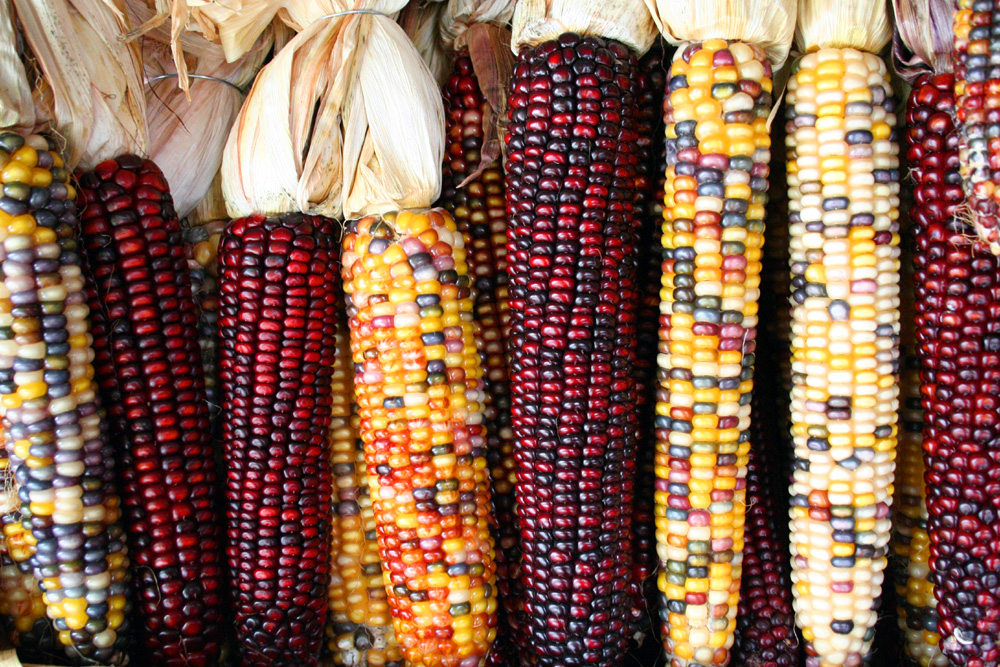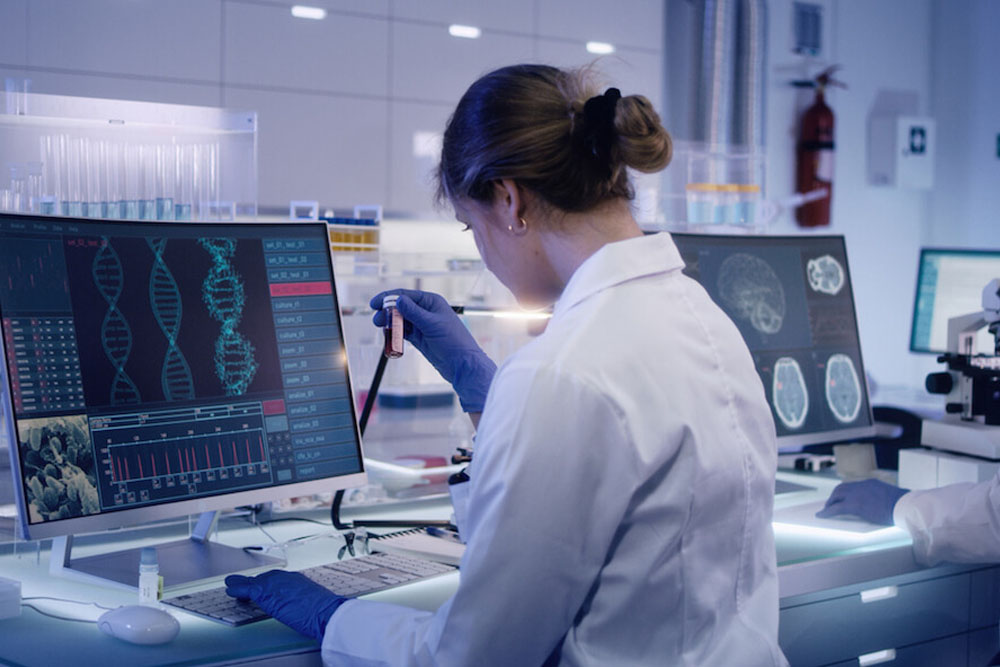Online Bioinformatics Homework Help
Bioinformatics is associated with analyzing and assessing biotechnological data that helps maintain the records. For any successful bio-development, bioinformatics is compulsory. Our bioinformatics expert tutors are available to help you 24x7 with your bioinformatics homework help needs.
Why Study Bioinformatics?
Bioinformatics is a professional subject chosen by many students at their academic and higher study levels. Learning Bioinformatics methods means you want to build a great career in the healthcare and health management sectors. Often, students who select Bioinformatics find themselves stuck on certain complex topics. Our expert and qualified bioinformatics professionals help you understand these concepts, even in critical cases.
At onlinecollegehomeworkhelp.com, our bioinformatics tutors provide 24/7 homework, assignments, and tutoring help to college bioinformatics students.
What is Bioinformatics?
Bioinformatics is concerned with gathering data and determining complex structures such as gene coding. Large protein sequences can be modified and detected using statistical techniques.
Objectives of Bioinformatics
- To obtain the structure of molecules, the sequence of genes, and machine learning calculations.
- To discover new genes and proteins, whether DNA or RNA.
- To develop strategies for identifying quality within sequences, predicting protein structure and function, and clustering protein sequences into families of related groups.
- To advance modern algorithms (scientific equations) and statistical measures that assess relationships in large datasets.
History of Bioinformatics
Paulien Hogeweg, a Dutch scientist, coined the term "bioinformatics," which refers to acquiring knowledge at the molecular level in biological systems using computer tools.
Basic Requirements for Bioinformatics
The basic requirements include software for data analysis and an internet connection to fetch information from the world wide web. One of the best and easiest tools for this is BLAST (Basic Local Alignment Search Tool), available at www.ncbi.nlm.nih.gov/BLAST/.
Applications of Bioinformatics
1. Genomics
Bioinformatics is crucial for analysing and interpreting genomic data, including genome sequencing, annotation, and comparison. It helps identify genes, gene functions, and genetic variations across different species.
2. Proteomics
Bioinformatics plays a significant role in studying protein structures, functions, and interactions. Tools are used to predict protein folding, identify protein-protein interactions, and analyze protein sequences.
3. Drug Discovery and Design
Bioinformatics aids in identifying drug targets, predicting molecular interactions, and designing new drugs. Techniques like molecular docking, structure-based drug design (SBDD), and virtual high-throughput screening (vHTS) are commonly used.
4. Personalized Medicine
Bioinformatics helps tailor medical treatments to individuals based on their genetic makeup. By analyzing a patient’s genome, bioinformaticians can predict drug responses and disease risks, leading to more effective treatments.
5. Functional Genomics
It involves the study of gene expression and function using techniques such as microarrays and RNA sequencing. Bioinformatics tools help analyze and interpret the vast data generated from these techniques.
6. Phylogenetics
Bioinformatics is used to study evolutionary relationships between species by analyzing genetic sequences. Phylogenetic trees are constructed to show how different organisms are related based on their genetic similarities and differences.
7. Systems Biology
Bioinformatics enables the integration of genomics, proteomics, and metabolomics data to study complex biological systems. It helps understand the interactions and regulatory networks within a cell or organism.
8. Metagenomics
Bioinformatics allows for analysing environmental samples containing DNA from multiple organisms, helping scientists understand microbial communities and their roles in ecosystems, human health, and disease.
9. Gene Therapy
Bioinformatics helps identify and validate potential gene therapy targets. It aids in the design of vectors for gene delivery and helps monitor the effectiveness of gene therapies.
10. Agriculture
In agricultural biotechnology, bioinformatics is used to improve crop yield, pest resistance, and quality by analyzing the genetic data of plants and microorganisms.
11. Cancer Research
Bioinformatics tools are used to study cancer genomics, identify cancer-related mutations, and develop targeted therapies. It plays a key role in understanding tumour evolution and drug resistance.
12. Molecular Diagnostics
Bioinformatics helps develop diagnostic tools to analyze DNA, RNA, or protein data to detect diseases early or predict their progression.
How Our Experts Assist You in Understanding Bioinformatics
-
Correctness
Our experienced Bioinformatics tutors provide accurate solutions to even the toughest projects. Get help with any Bioinformatics topic from our expert team.
-
In-Depth Solutions
We offer thorough mentoring on Bioinformatics question patterns and exam preparation, ensuring you understand the material completely.
-
Affordable
Our Bioinformatics assignment help is available at affordable rates, making it accessible for all students to receive quality training.
-
Wide-Ranging Services
We provide assistance in various areas of Bioinformatics, including:
- Data assortment
- Storage and recovery
- Data manipulation
- Modeling for analysis and prediction
We help you analyze complex biological data, including genetic information.
-
24/7 Support
Our Bioinformatics help is available 24/7. Whenever you need assistance, we are here to support you.
-
Conclusion
If you want a successful career in healthcare or medicine, choose Bioinformatics. Our online services can help you achieve your goals.
Branches of Bioinformatics where we provide Homework & Assignment Help
-
Genomics
Focuses on the study of genomes, including sequencing, annotation, and comparison of genetic material across different organisms.
-
Proteomics
Involves the analysis of the structure and function of proteins, including protein interactions, modifications, and expression levels.
-
Transcriptomics
Studies the transcriptome, the complete set of RNA transcripts produced by the genome under specific circumstances, helping to understand gene expression.
-
Metabolomics
Examines the metabolic profiles of organisms, analyzing small molecules (metabolites) in biological samples to understand metabolic processes.
-
Structural Bioinformatics
Focuses on the analysis and prediction of protein and nucleic acid structures, including 3D modeling and simulations.
-
Comparative Bioinformatics
Involves the comparison of biological data across different species or conditions to understand evolutionary relationships and functional similarities.
-
Systems Biology
Integrates data from genomics, proteomics, and other fields to study complex biological systems and interactions within cells and organisms.
-
Computational Biology
Applies computational techniques and algorithms to model biological systems, analyze biological data, and simulate biological processes.
-
Pharmacogenomics
Studies how genes affect a person's response to drugs, aiming to develop personalized medicine strategies.
-
Phylogenetics
Involves the study of evolutionary relationships among species through the analysis of genetic sequences.
-
Microbial Bioinformatics
Focuses on the analysis of microbial genomes and metagenomes to understand microbial diversity, functions, and interactions in ecosystems.
-
Clinical Bioinformatics
Applies bioinformatics tools and techniques in clinical settings to aid in diagnosis, treatment planning, and understanding disease mechanisms.
FAQs Related to Bioinformatics Homework and Assignment Help:
 "
" 

